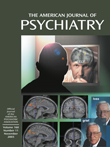The Relationship of Borderline Personality Disorder to Posttraumatic Stress Disorder and Traumatic Events
Abstract
OBJECTIVE: The authors examined the relationship of borderline personality disorder to posttraumatic stress disorder (PTSD) with respect to the role of trauma and its timing. METHOD: The Trauma History Questionnaire and the PTSD module of the Structured Clinical Interview for DSM-III-R were administered to 180 male and female outpatients with a diagnosis of one or more DSM-III-R personality disorders. Path analysis was used to evaluate the relationship between borderline personality disorder and PTSD. RESULTS: High rates of early and lifetime trauma were found for the subject group as a whole. Compared to subjects without borderline personality disorder, subjects with borderline personality disorder had significantly higher rates of childhood/adolescent physical abuse (52.8% versus 34.3%) and were twice as likely to develop PTSD. In the path analysis of the relationship between borderline personality disorder and PTSD, none of the different types of paths (direct path, indirect paths through adulthood traumas, paths sharing the antecedent of childhood abuse) was significant. The associations with both trauma and PTSD were not unique to borderline personality disorder; paranoid personality disorder subjects had an even higher rate of comorbid PTSD than subjects without paranoid personality disorder, as well as elevated rates of physical abuse and assault in childhood/adolescence and adulthood. CONCLUSIONS: The associations of personality disorder with early trauma and PTSD were evident, but modest, in borderline personality disorder and were not unique to this type of personality disorder. The results do not appear substantial or distinct enough to support singling out borderline personality disorder from the other personality disorders as a trauma-spectrum disorder or variant of PTSD.



